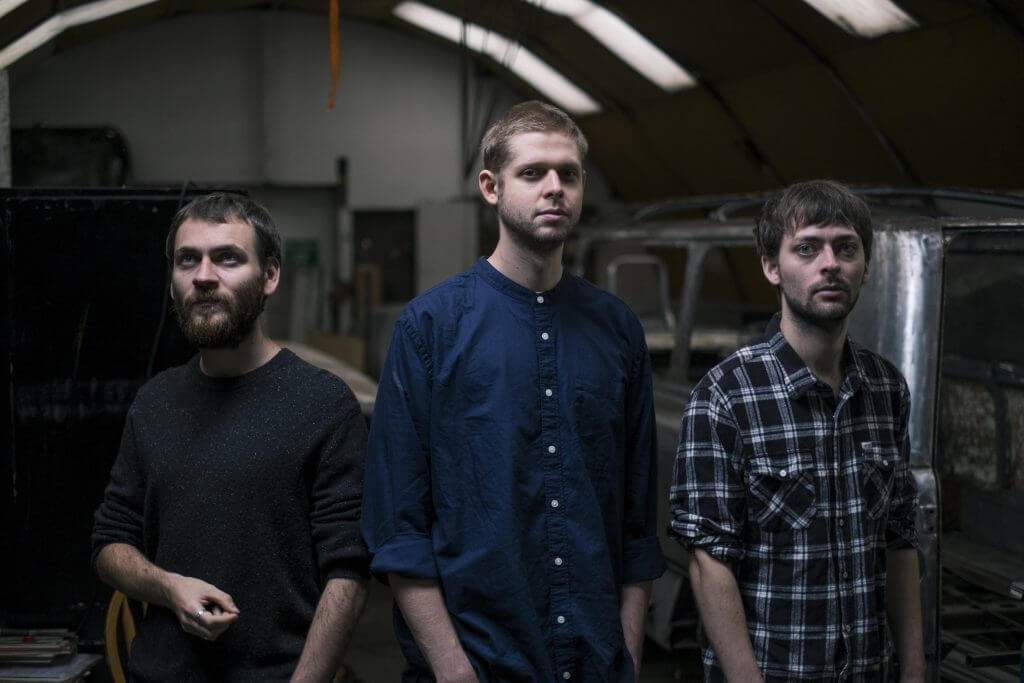Recording & Mixing Mammal Hands – ‘Shadow Work’
- About the Recording: Notes by George Atkins
‘Shadow Work’ was recorded over six days at 96kHz 24bit through 80 Hertz’s Neve Genesys, using the on board A to D and D to A converters. We let the drums breath in the 1000 square foot live room. Jordan (on sax) & Nick on a 1977 Yamaha U3 upright were in booths with line of sight. The aim being to keep the band in a familiar live concert config.
I had worked with the band on their last two records, so importantly, we were on the same page with regards to the records sonic vision. I’m always keen to get the best results possible at source, and thus committed analogue EQ and compression moves when recording, seeking as close to finished sound as possible.
The music studios at 80 Hertz were designed with shrinking recording budgets in mind. Bands/artists that are in their element live, can make great use of the setup, plus the engineers & producers retain important instrument isolation. The live room sound greatly contributed to the open and wide drum sound, & was used as a reverb chamber to colour other instruments, which gave us a helping ‘glue’ to the record.
We used a pair of valve Neumann U67’s as drum over heads in conjunction with numerous spot & room mics to cover all areas encase we needed them at the mix stage. We wanted the lacquer cut to sound as good as possible, so time was spent refining mic positions to ensure phase coherency (necessary for a good sounding vinyl) before we hit record. Music with heavy stereo dynamics such as Nicks piano parts, are notoriously difficult to cut faithfully due to the inherent technical ‘limitations’ of vinyl.
The piano had a stereo array of ribbon mics at the rear and valve condensers across the front. I used AEA JFET mic pres on the Coles 4038 ribbon mics to yield as lower noise floor as possible, due to the piano often being muted by material (naturally reducing the output) to attain the tone/aesthetic pianist Nick Smart was after on certain tracks.
The sax was recorded with a valve Neumann U47, along with a pair of telefunken ELAM M260 valve mics as overheads, to capture the space and give listeners a stereo picture of Jordan – contributing to the records complex stereo image.
Once the various takes had been edited, we mixed the record through the Neve console, summing in analogue with the desk EQ and a selection of valve outboard compression / EQ doing the ‘heavy lifting’, using plugins where necessary.
We had a great time recording as always, it’s a pleasure to work with Mammal Hands & Gondwana.

Mammal Hands, Shadow Work | About the Music
The album opens with the catchy Black Sails, a track that emerged through a group improvisation, it’s a high-energy piece with a lot of forward motion and lots of dynamic shifts that make full use of deceptively simple ideas.
The elegant Wringer is one of the tracks that came from experimenting with muting the sound of the piano using felt and explores a different side to the band’s personality.
Boreal Forest builds from something small to something huge and the intense finale incorporates forceful group playing and electronic influenced beats.
Solitary Bee, the other track that utilises muting of the piano, conjures everyday things and spaces with a chorus melody that is influenced by modern Irish and folk tunes, and was composed on wooden flute.
Three Good Things starts with a slow passage, utilising a drum kit heavily altered by the use of metal objects, it builds to a piano and tabla duet, before a heavier groove section segues back to the tune.
The wistful Living Frost opens with the tabla bass leading us into a 7/8 tune that slowly grows and mutates into a forceful chorus full of emotion, before a slow spacious outro with strings.
Near Far is an improvised piece by Nick Smart, recorded during a quiet moment in the studio, it was an unplanned and reflective piece that seemed to fit naturally with the rest of the material.
One of the album’s many stand out tracks, Straight Up Raining is another composition that draws heavily on folk music. While the outro has some minimalist/electronic style piano parts mixed with heavily effected sax and rolling drum grooves.
The epic Transfixed starts with the group playing one note in unison and unfolds from there, building from a minimalist theme to something more complex and powerful where Jesse’s unique hybrid drums and tabla set-up with nick’s piano and rhodes drives Jordan’s soloing.
Finally, the album ends with the pastoral Being Here, a recording that was made during a session at their own recording space in Norwich, when Nick improvised a piano part and Jordan captured some singing birds and field recordings from around the area and garden, together with some samples of a bowed vibraphone. It offers an aural representation of where this album was written but also offers a beautiful ending to a journey through Mammal Hands’ musical world: one where folk and classical influences rub alongside modern production techniques and 21stcentury spiritual-jazz to create something wonderful and new and wholly their own.
